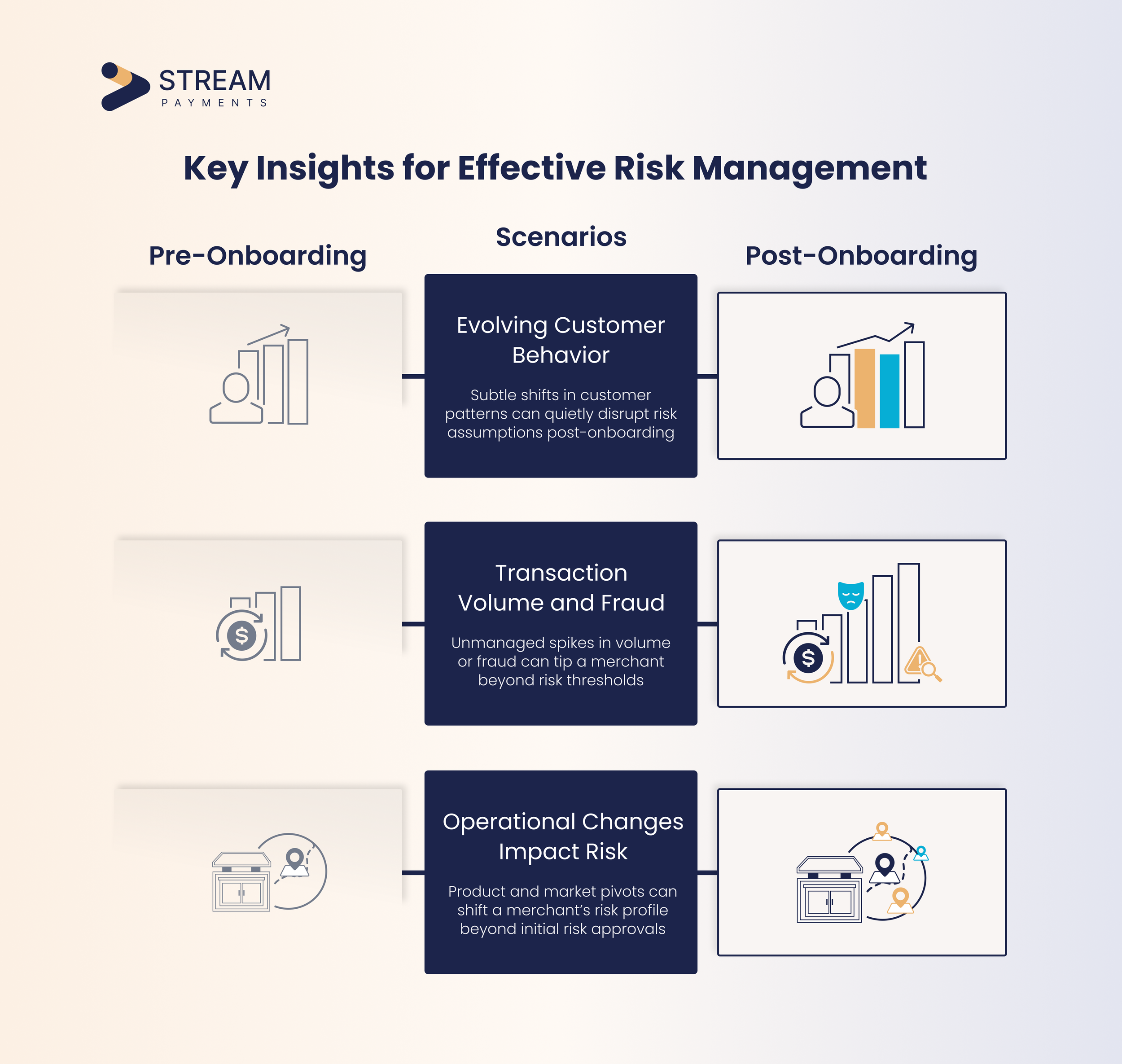Early Risk Management, The Key to Acquiring Stability
Acquiring isn’t just about approvals. It’s about sustaining them.
Many merchants believe their relationship with the acquirer is defined at onboarding. In reality, the most critical phase begins after approval, when business activities evolve, customer behaviours shift, and operational processes gradually challenge the risk assumptions an acquirer originally approved.
These shifts are rarely abrupt. They build silently through:
New product launches
Seasonal volume peaks
Cross-border expansions
Changes in traffic sources
While these are positive business developments, they can quietly alter a merchant’s risk profile.
This is where the gap emerges.
Merchants monitor performance metrics like growth, conversions, and refund rates.
Acquirers, however, observe velocity patterns, exposure thresholds, and profile drift, looking for signals that suggest unmanaged risk.
When these perspectives fall out of sync, the merchant account stability is compromised.
Delays, reserve increases and even MID terminations can follow.
Effective risk management requires more than just tracking transactions.
Early risk management is key to acquiring stability and requires:
Monitoring operational changes against onboarding assumptions
Validating transaction behaviours proactively
Pre-empting acquirer scrutiny by maintaining narrative alignment
Surfacing early indicators before they escalate unnoticed
A stable relationship with the acquirer doesn’t happen by default. It requires a structured process of continuously interpreting the merchant’s evolving business reality and ensuring it stays aligned with acquirer expectations.
𝐀𝐜𝐪𝐮𝐢𝐫𝐞𝐫𝐬 𝐚𝐫𝐞 𝐫𝐞𝐚𝐝𝐢𝐧𝐠 𝐬𝐢𝐠𝐧𝐚𝐥𝐬. 𝐘𝐨𝐮𝐫 𝐬𝐞𝐭𝐮𝐩 𝐢𝐬 𝐨𝐧𝐞 𝐨𝐟 𝐭𝐡𝐞𝐦.
📧For a free compliance review and rate analysis, email info@streampayments.com

